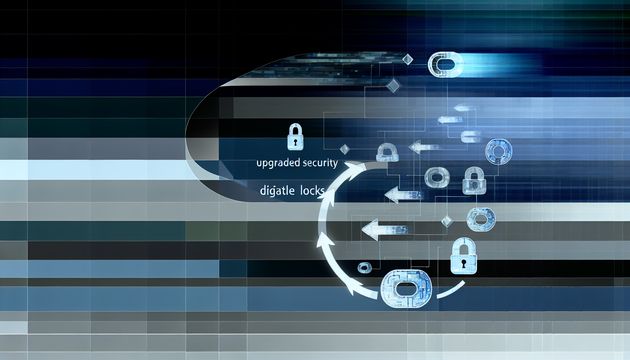
The XZ-Utils Backdoor: A Critical Software Supply Chain Compromise
The discovery of the XZ-Utils backdoor in March 2024 sent shockwaves through the cybersecurity community. Embedded within the liblzma.so library of the xz-utils compression tool, this backdoor was a sophisticated exploit that allowed attackers to gain root access to affected systems. The backdoor was introduced by a developer named “Jia Tan,” who had built a reputation within the project over two years (Bleeping Computer). This vulnerability was particularly alarming as it was included in official Linux distribution packages, marking it as one of the most critical software supply chain compromises of the year (Binarly).
The XZ-Utils Backdoor: An Overview
Discovery and Initial Impact
The XZ-Utils backdoor was first discovered in March 2024, creating significant concern within the cybersecurity community. The backdoor was embedded in the liblzma.so library, a component of the xz-utils compression tool, specifically in versions 5.6.0 and 5.6.1. This backdoor was injected by a developer named “Jia Tan,” who had built credibility within the project over two years through numerous contributions (Bleeping Computer).
The backdoor exploited the RSA_public_decrypt function in OpenSSH by using the glibc’s IFUNC mechanism. In simpler terms, this allowed an attacker with a specific private key to connect over SSH to an affected system, bypass authentication, and execute commands with root privileges. Imagine it as having a master key that opens any door in a building. This vulnerability was particularly severe as it was included in official Linux distribution packages such as Debian, Fedora, OpenSUSE, and Red Hat, marking it as one of the most critical software supply chain compromises of the year (Binarly).
Propagation in Docker Hub
Docker Hub, a widely used public container image registry, was significantly impacted by the XZ-Utils backdoor. Researchers from Binarly identified at least 35 Linux images on Docker Hub still containing the backdoor. These compromised images were not only publicly available but also served as base images for other Docker images, leading to a transitive infection. This means that any new images built on these compromised base images would inherit the backdoor, potentially affecting a broad range of users and systems (Bleeping Computer).
The decision by Debian maintainers to leave these images online, citing low risk and the importance of archiving continuity, has been controversial. Binarly and other security experts have expressed concern that the availability of these images poses a significant risk, especially if accidentally pulled or used in automated builds (Binarly).
Technical Details and Exploitation
The XZ-Utils backdoor operates by hijacking the RSA_public_decrypt function, which is part of the OpenSSH server’s authentication process. The backdoor is triggered when a client with a specially crafted private key interacts with the infected SSH server. This allows the attacker to bypass authentication and gain root access to the system. The exploitation requires the SSH service (sshd) to be installed and running on the container, and the attacker must have network access to the SSH service (Bleeping Computer).
Despite these requirements, the presence of the backdoor in publicly available Docker images increases the risk of accidental exploitation, especially in environments where security practices are not strictly enforced. The backdoor’s stealthy nature and the fact that it was included in official distribution packages highlight the challenges in detecting and mitigating such vulnerabilities (Binarly).
Response and Mitigation
Upon discovery, security firms like Binarly and Kaspersky quickly developed scanners to detect the presence of the XZ-Utils backdoor in open-source software. These tools have been instrumental in identifying compromised systems and mitigating the risk posed by the backdoor. However, the response from some maintainers, particularly Debian, has been criticized for not removing the affected images from Docker Hub (Bleeping Computer).
Users are advised to manually check their Docker images and ensure they are using versions of the xz-utils library that are 5.6.2 or later, as these versions are not affected by the backdoor. The latest stable version, 5.8.1, is recommended for all users to ensure maximum security (Binarly).
Broader Implications and Lessons Learned
The XZ-Utils backdoor incident underscores the vulnerabilities inherent in the software supply chain and the potential for widespread impact when a trusted component is compromised. The fact that a long-time contributor could inject such a backdoor highlights the need for more rigorous code review processes and the implementation of security measures at every stage of software development and distribution.
This incident also emphasizes the importance of transparency and timely response in addressing security vulnerabilities. While the backdoor was discovered early, the decision to leave affected images online has sparked debate about the balance between historical archiving and security risk management. Moving forward, organizations must prioritize security over convenience to prevent similar incidents from occurring (Bleeping Computer).
In conclusion, the XZ-Utils backdoor serves as a stark reminder of the critical importance of securing the software supply chain and the need for continuous vigilance in the face of evolving cybersecurity threats.
References
- Docker Hub still hosts dozens of Linux images with the XZ backdoor. (2024). Bleeping Computer. https://www.bleepingcomputer.com/news/security/docker-hub-still-hosts-dozens-of-linux-images-with-the-xz-backdoor/
- Persistent risk: XZ-Utils backdoor still lurking in Docker images. (2024). Binarly. https://www.binarly.io/blog/persistent-risk-xz-utils-backdoor-still-lurking-in-docker-images



